You’re going to hear all kinds of opinions about whether essential oils can safely be taken internally or not. Before I share my beliefs on this subject, I’d like to give you a little history lesson…
History of Essential Oil Use
Let’s begin with the Egyptians… From them, we have the most comprehensive early records of essential oil use. The Egyptians used them for cosmetic purposes, to treat illnesses, in religious practices, and to preserve dead bodies.

Fun little history fact… notice the rounded cones on the ladies’ heads? Do you know what those are? Ready?? They’re cones made of hippopotamus fat, soaked in essential oils. The Egyptians would wear these on top of their heads as they went about their day. In the hot sun, the fats would melt and run down their bodies, moisturizing them and protecting their skin from the hot sun. Isn’t that just lovely??
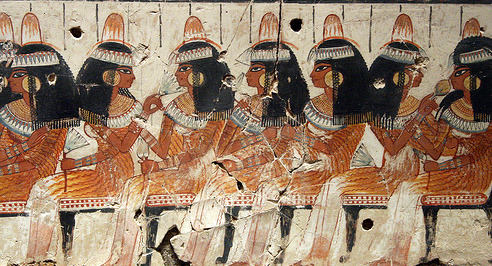
The Greeks and Romans learned about, and bought most of their essential oils from, the Egyptians. Because they were trained by the Egyptians, they used the oils in many of the same ways.

With the fall of the Roman empire, many of the Roman physicians fled to Constantinople, taking with them their knowledge of essential oils. They taught the Arabians about aromatherapy and the Arabians improved on it with such developments as the refrigerated coil used in the distillation process. The Arabians became famous across Europe and the Middle East for their perfumes.

In the 12th century, healers in Europe, particularly those in monasteries, began to distill small quantities of their own essential oils. In medieval Europe, all literary knowledge was in the hands of the nuns and monks, such as Hildegard von Bingen, who studied and recorded the medicinal uses of plants, tinctures, and essential oils.

While essential oils have been around for thousands of years and have been used by many civilizations for medicinal, ceremonial, and cosmetic purposes, they went through a resurgence in popularity in the early 1900s when a French chemist named Rene-Maurice Gattefosse severely burned his hand in a laboratory explosion. Here’s what Gattefosse said about the incident,
The external application of small quantities of essences rapidly stops the spread of gangrenous sores. In my personal experience, after a laboratory explosion covered me with burning substances which I extinguished by rolling on the grassy lawn, both my hands were covered with a rapidly developing gas gangrene. Just one rinse with Lavender essence stopped the gasification of the tissue. This treatment was followed by profuse sweating, and the healing process began the next day [July 1910]. Taken from Aromatherapie by Rene-Maurice Gattefosse.
The results of his healing greatly impressed him. Gattefosse became fascinated with essential oils and experimented with them during WWI on soldiers in military hospitals. Gattefosse became the father of the “French model” of essential oil usage.
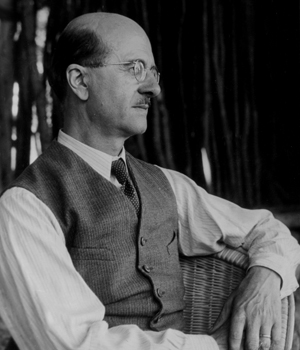
In the 1920s, French medical doctors began exploring the use of essential oils in treating patients for medical conditions. A WWII doctor, Jean Valnet, resorted to using essential oils when he ran out of antibiotics. He used the oils and techniques that had been discovered (or rather re-discovered) by the French medical community. He found them to be surprisingly effective and he continued to develop aromatherapy upon the foundation laid by Gattefosse. Dr. Valnet believed that the use of essential oils should not be limited to registered professionals. It was his belief that anyone who had a basic understanding of essential oils and access to a quality source could safely and effectively use them for the betterment of their health.
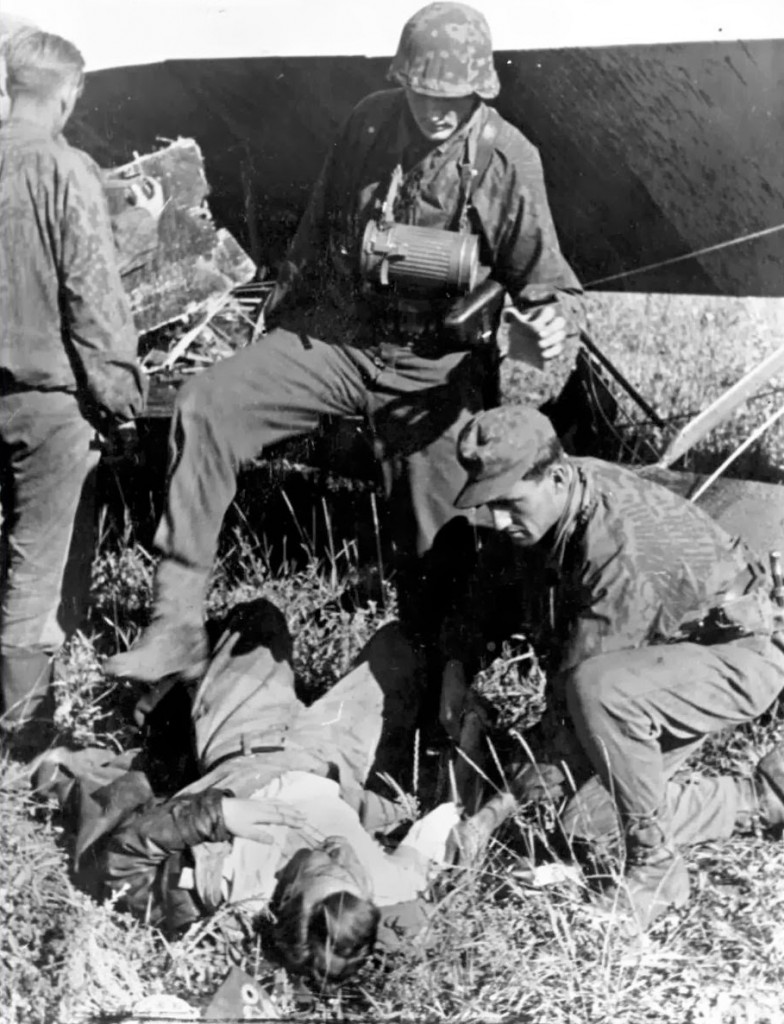
Around the same time that Dr. Valnet and his contemporaries were pioneering the use of essential oils in the medical field, a French biochemist, Marguerite Maury, became deeply interested in the uses of essential oils. Maury studied Valnet’s work, but because she was not a doctor, her focus was less on medical uses and more on quality of life uses. Her study relied mainly on essential oils used for massage, perfumery, and scent-related methods. Around 1950, she moved to England where she established spa-like clinics focused on beauty and rejuvenation. Maury did not stress the need for high quality oils, she diluted all oils heavily for use in massage, and she only used essential oils externally. The “British method” of essential oil usage stems from Maury’s work.
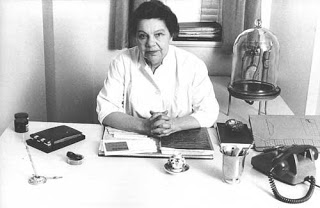
So, we have the French model stemming from the French medical community, which encourages the use of the highest quality essential oils used externally, internally, aromatically, diluted or neat (undiluted), and used frequently. And, we have the British method which does not require the highest quality of essential oils, always dilutes heavily, and uses the oils only externally and aromatically.
Because of my research and my experience, I choose to combine the two methods. I choose the highest quality oils I can find and then feel comfortable using them topically, aromatically, and internally, but I almost always dilute them heavily. Just because I’m comfortable with it, doesn’t make it right for you though. I would never push something on you. You’ll have to decide for yourself how you use the oils. If you do choose to take the oils internally, I would recommend using very small doses and diluting them.
For those of us who do choose to take doTERRA’s oils internally, here are some of the ways that they can be used:
Sublingual
One of the most effective ways to take essential oils is to place a drop under the tongue. Because the blood capillaries are so close to the surface of the tissue under the tongue, many essential oil constituents are able to pass directly into the blood stream. From there, they travel to different areas of the body where they are needed.
Capsules
A common way to take essential oils internally is to place a few drops of essential oil inside an empty capsule. Just as I recommend diluting oils for use externally, I also think it’s wise to dilute oils when taking them internally. I would begin with just 1-3 drops of essential oil in a capsule which is then filled with olive oil or fractionated coconut oil.
We rarely get sick, but we recently went through a stressful situation and as a result, my immune system crashed. I came down with a couple different bugs at the same time. As soon as I felt the first symptoms, I started making my own homemade remedy. I put 1 drop each of Oregano, Melaleuca, and On Guard (diluted) in a capsule about every two hours. By afternoon the following day, I was completely recovered.

Beverage
Place 1 drop of essential oil in 1-4 cups of water, then drink. Make sure your cup is glass or stainless steel, not plastic. Pure essential oils (especially citrus) can disintegrate plastics.
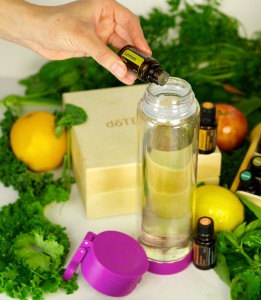
Cooking
Essential oils can easily be incorporated into your cooking; just remember that they are very concentrated. Usually only 1 drop is necessary, and sometimes even less.
Oil Pulling
This is not actually ingestion, but it does involve putting essential oils in your mouth. This therapy is proven to improve the health of gums and teeth, and may have further detoxifying benefits. Choose an appropriate vegetable oil to use as a carrier (grapeseed, coconut, and olive oil are recommended). Combine 2 drops of an essential oil such as Myrrh, Clove, On Guard, or Peppermint to the carrier oil and without swallowing, swish and pull the oil mixture through the teeth and around the mouth for 5-20 minutes. Spit out the mixture and brush your teeth.
Vaginal Insertion
There are three main methods of inserting essential oils vaginally.
- The oils can be diluted in 2-3 teaspoons of a carrier oil, inserted using a vaginal syringe, and then held in place using a tampon.
- The oils can be diluted in 1-2 teaspoons of carrier oil, and then a tampon can be used to soak up the mixture. This is then inserted all day or overnight.
- Add a few drops of oil to warm water and then use a vaginal syringe to irrigate and rinse internally using the oil and water mixture. This would be helpful for yeast infections.
Enema
Affectionately called the Butt Bomb, this uncomfortable protocol is one of the more effective methods of getting essential oils deep into the lungs. Add the desired oils to a Veggie Cap and fill the remainder with coconut oil. Insert. Or, add the essential oils along with approximately 25 drops of carrier oil to an enema syringe and apply. I have not personally used the oils this way, so if you have questions… I’m not the person to ask. 😉
(Note: The above guidelines apply only to doTERRA oils. Because other essential oils may not be as pure, it could be dangerous to use them as suggested below. Only pure, therapeutic grade essential oils should be used for internal consumption, as other essential oils on the market may be diluted or processed using harmful chemicals.)
To learn more about essential oils, you can read my previous posts What are Essential Oils?, Why DoTERRA?, Using Essential Oils Topically, and Using Essential Oils Aromatically.
To buy doTERRA essential oils, visit here. If you want to learn about the option to buy wholesale, check out this post. Make sure you check out the current promo before you place an order! And, read about the Loyalty Rewards Program here. It is awesome!
